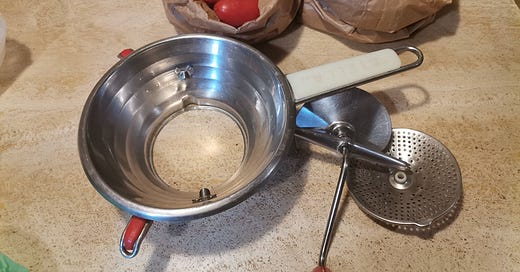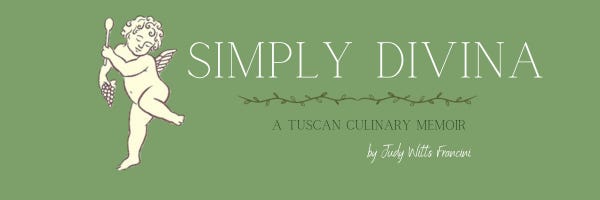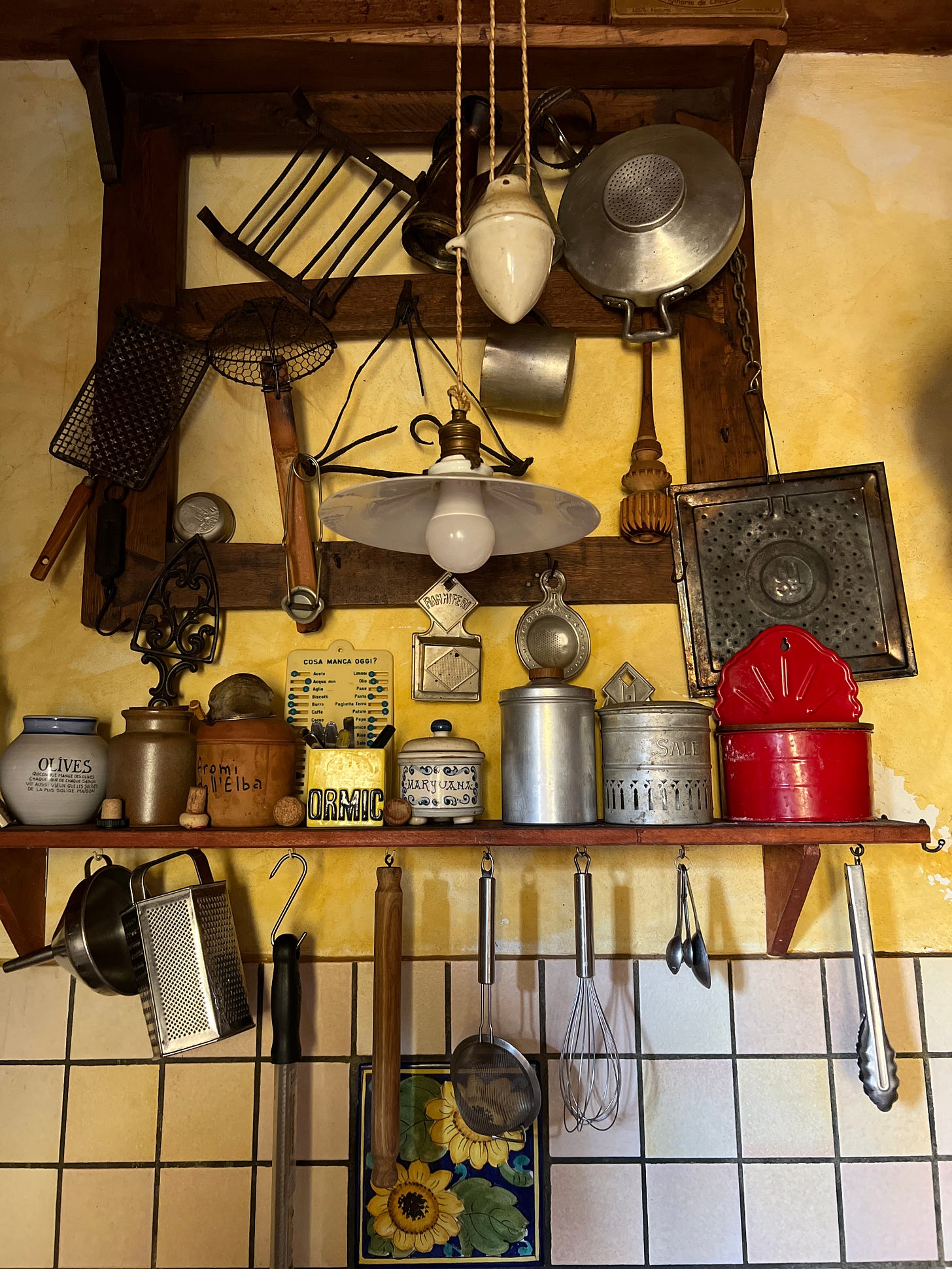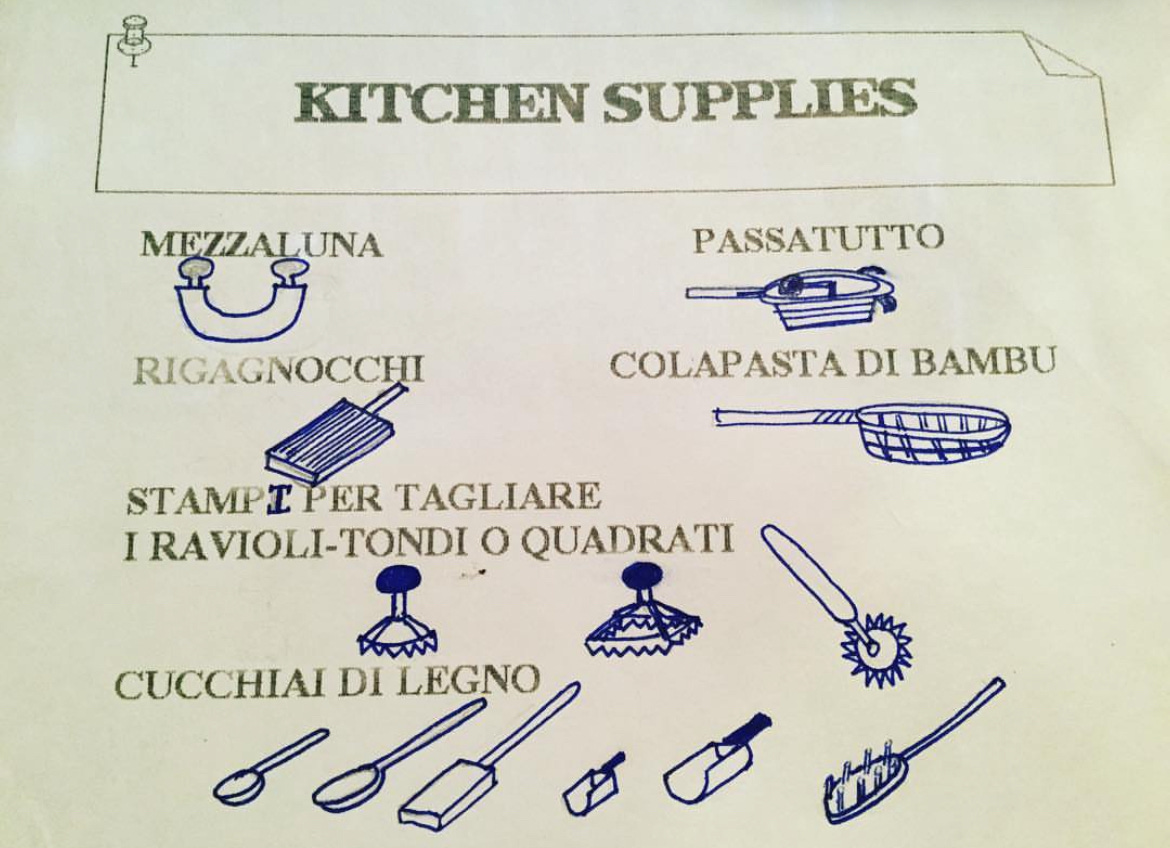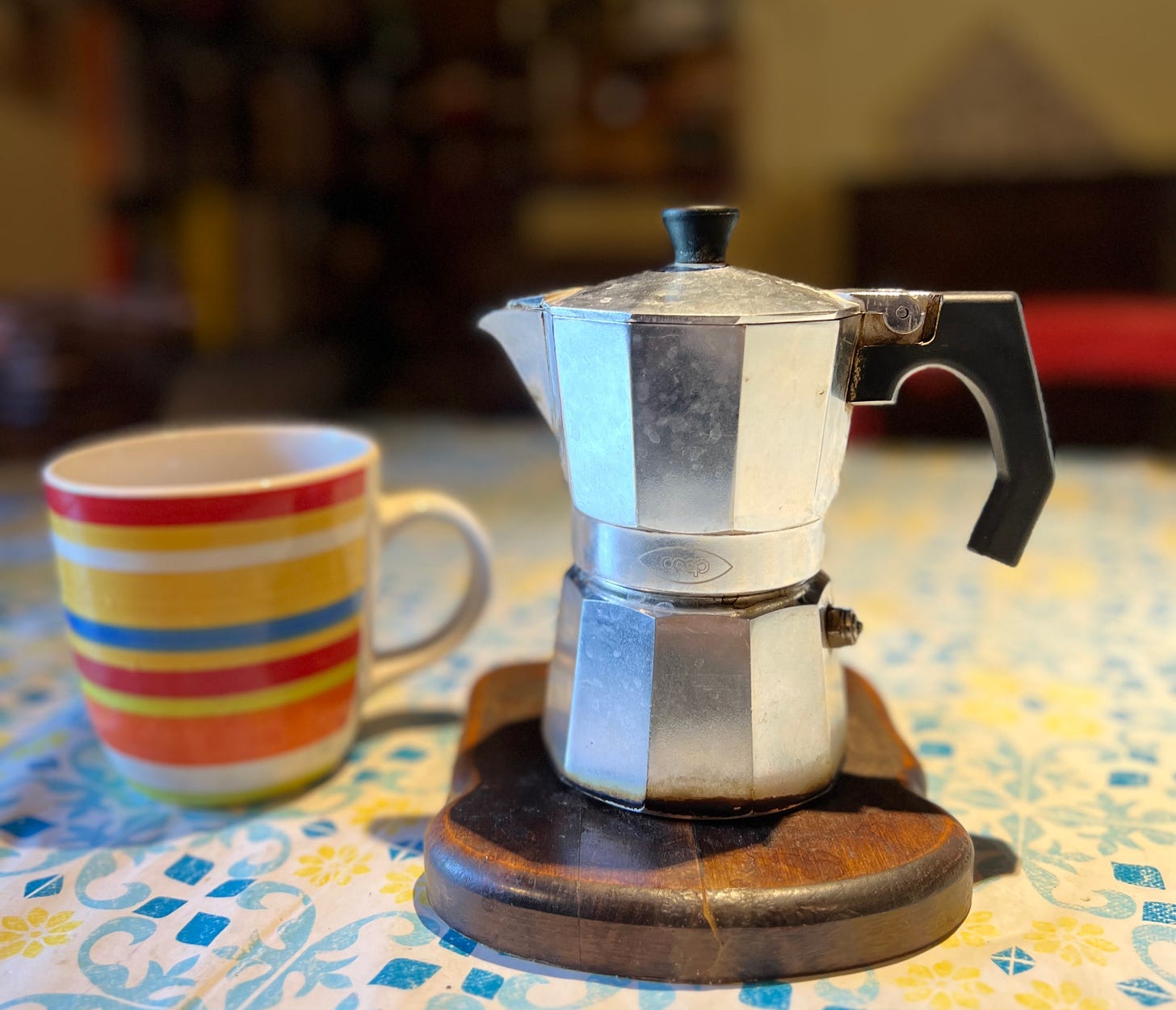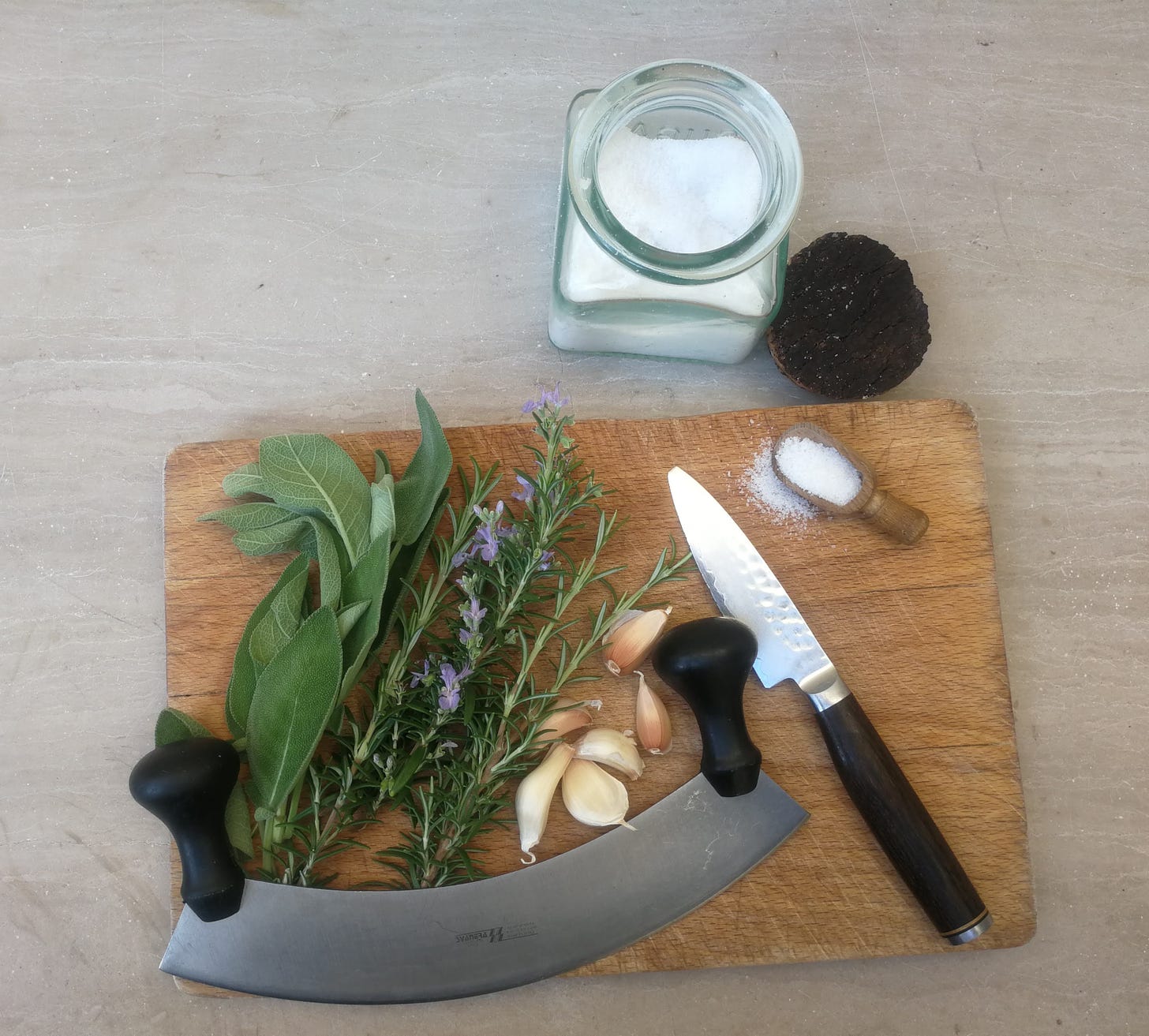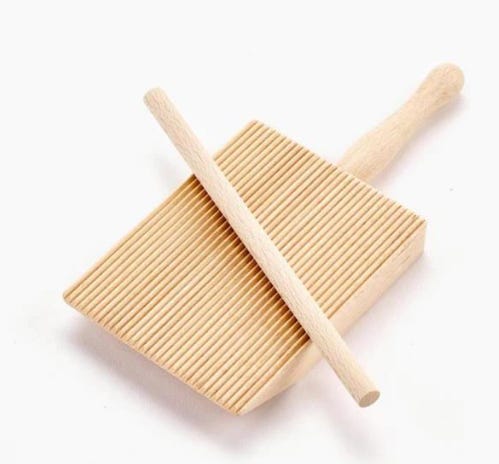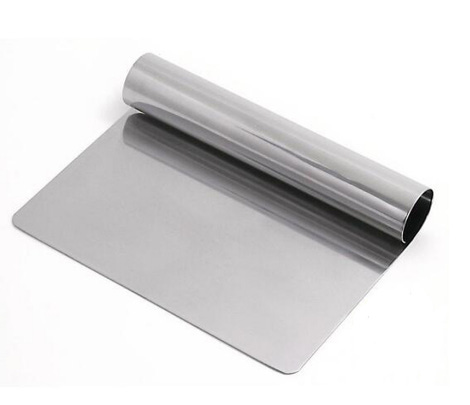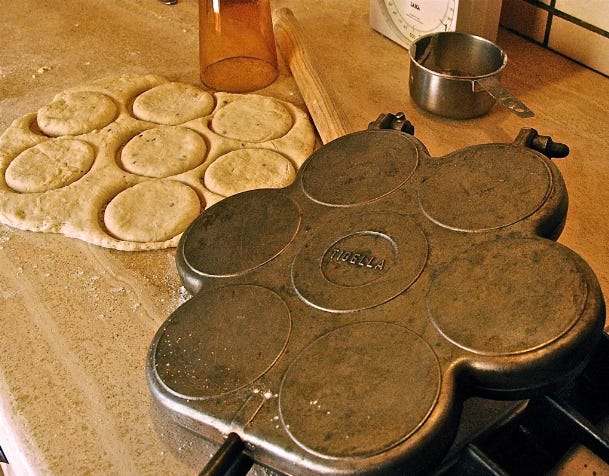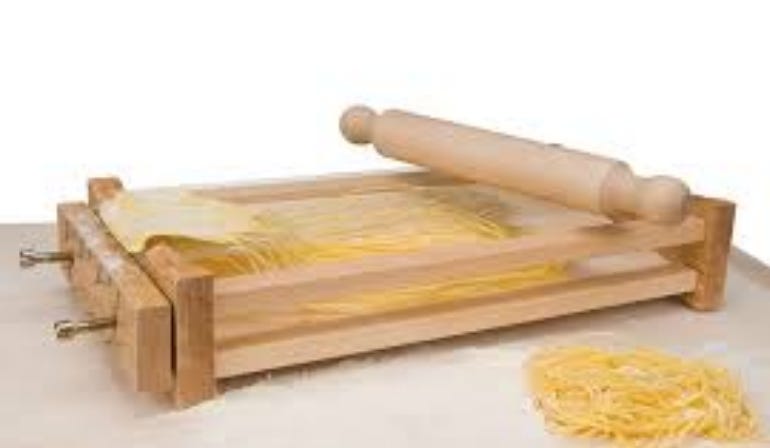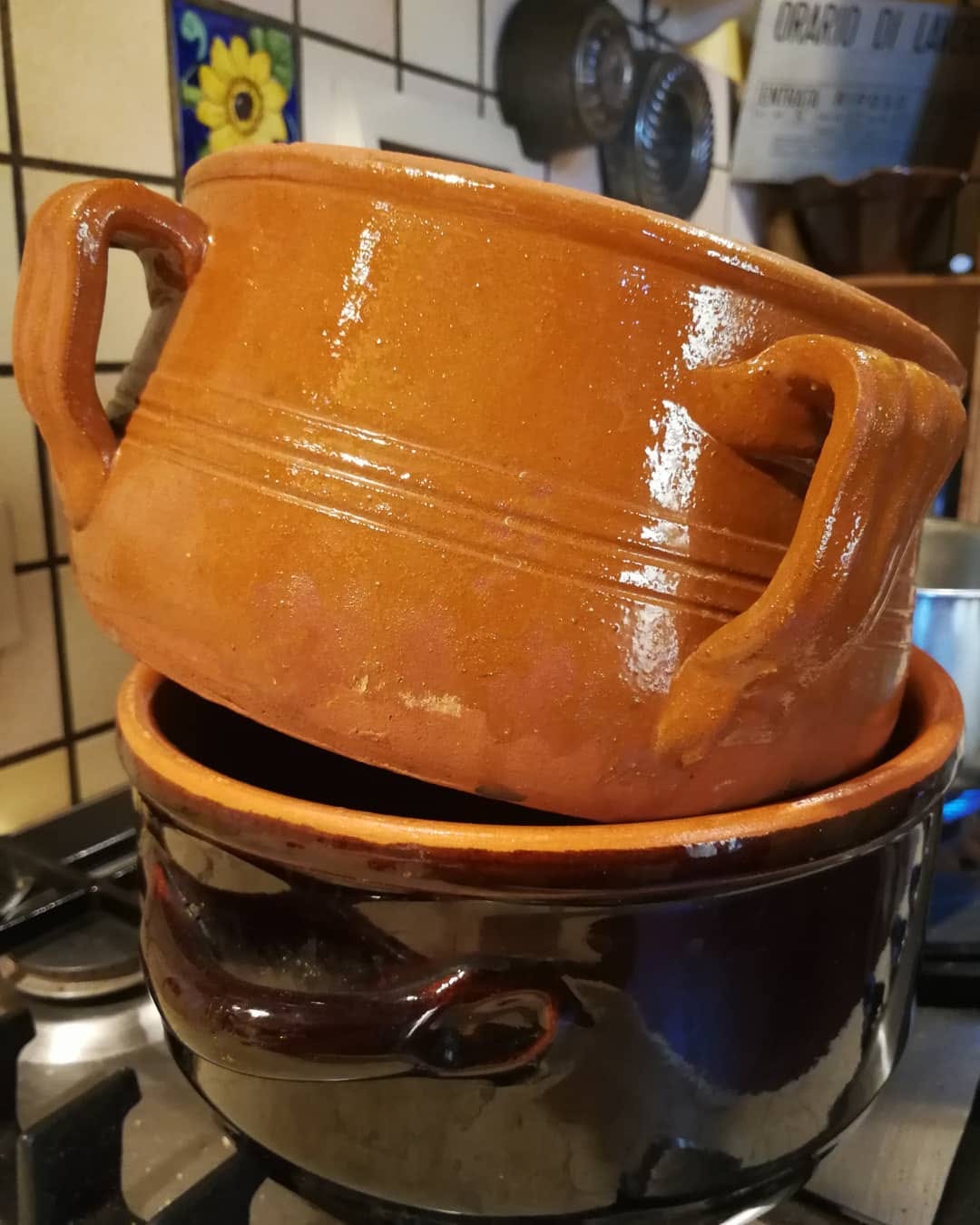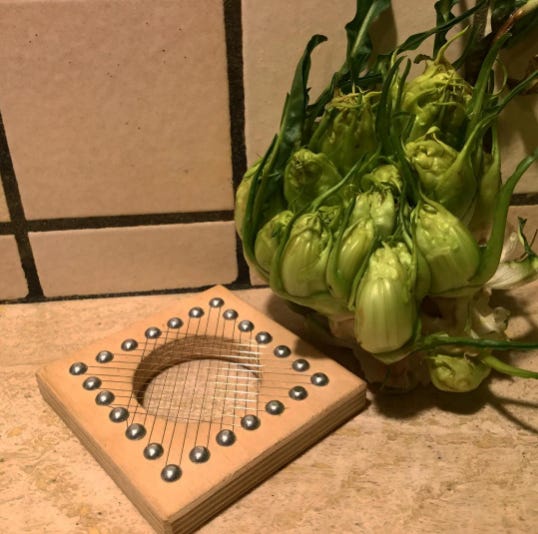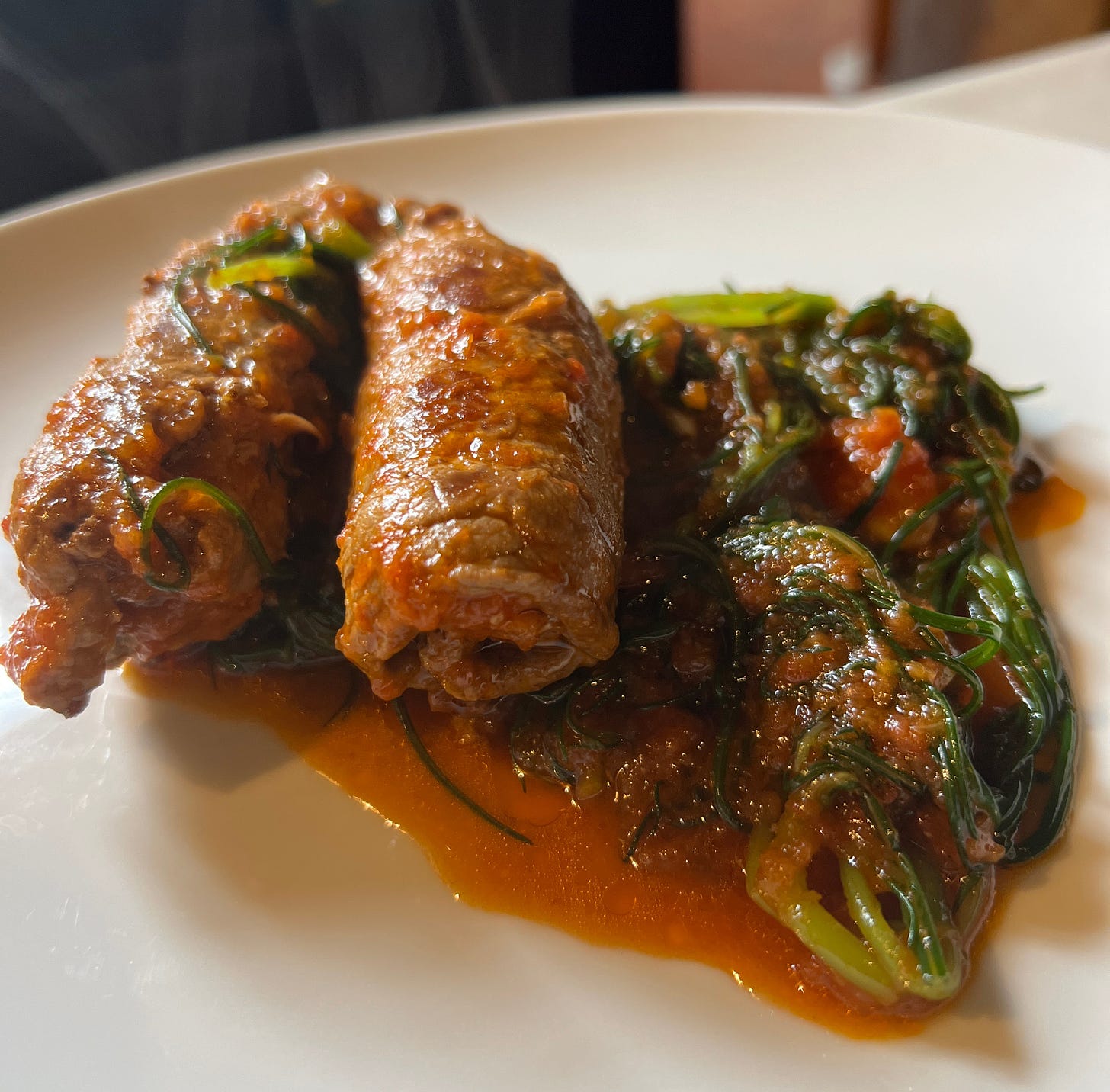It’s hard to believe it’s been 40 years. In this Culinary Memoir, Simply Divina Becoming a Tuscan cook, one recipe at a time, I will share how I ended up living and working in Tuscany. It takes a village or, in my case, a renaissance town, Florence, to share the secrets of local recipes and, at the same time, build up friendships in a new country.
Essays and recipes
La dispensa: Setting up your Tuscan Kitchen
Amici- Meet my mentors
I am fascinated with kitchen tools—the more different cuisines you cook, the more tools you need. Italian regional cooking is the same; each region has tools for its specialties. There are some basics everyone has.
One of the first things anyone needs is the MOKA for your morning coffee.
When you move to another country and set up your kitchen, you want to adapt to the local cuisine with the correct tools, but you may also need more tools to prepare other cuisines.
On my various trips back and forth to the USA, I brought back
A wok and a steamer basket for my Chinese cooking. I have several sets of chopsticks.
A sushi bamboo rolling pad to make sushi rolls and, of course, wasabi powder.
I use an aluminum tortilla press to make my Mexican tortillas.
My cast iron skillets.
Copper pot for whisking egg whites and my whisks
In Italy, some of the basics are:
Passatutto-food mill to puree and filter soups and sauces
Mezzaluna-a double-handled knife for mincing. I prefer this longer one to the shorter double-bladed version for chopping nuts.
Riga gnocchi- gnocchi ridger. There are several tools: the basket is from Calabria, the wooden paddle is the more classic version, and if it comes with a dowel, it is also for making garganelli pasta ( from Lucca), cavatelli, and malloreddus.
Raschietto- bench scraper
Frullatore ad immersione- immersion blender
in my tiny Tuscan kitchen; I don’t have a large mixer or food processor; this does it all.
Tigelle iron- A metal stovetop pan to make griddle bread from Emilia Romagna
Chittara- pasta cutting tool made with guitar strings
Corzetti- pasta stamps from Chiaveri
These are just some of the unique tools I use in my kitchen.
For cooking, the traditional local pots are made of terracotta.
The bottom pot is Tuscan. The company is called Vulcania. The upper pot is from Puglia and was created by artisan Antonio Sammarelli. They can be used on the stovetop and in the oven. Slow cooking and the clay make the food taste different as well.
I bought this tool for cutting puntarelle when I was in Rome. They are on the Chicory plant, sliced into thin pieces, and then kept in cold water. They make a salad with anchovies, lemon, and olive oil. In Rome, you can buy them already sliced.
After the paywall, This week’s homework is a tomato sauce called Sugo Finto, a meatless “Ragu.” With the Sugo Finto, we turn it into a passata di pomodoro sauce and make my mother-in-law’s Involtini- Beef rolls stuffed with artichokes.
Stanley Tucci’s mom learned how to make it here in Florence. One of my students, a chef from the USA, was cooking at a party where Stanley was present. The chef made the sugo finto, and Stanley asked, “Who made this sauce? “ he recognized it as the sauce his mom had learned to make in Florence. My student was thrilled.
This year’s project is sharing the recipes to become a Tuscan cook as I did, one recipe at a time. My ebook is included in the paid subscription, and you can access the archives.
Next week I share my mentor Leo Cardini, from the Mercato Centrale and his artichoke recipes.

